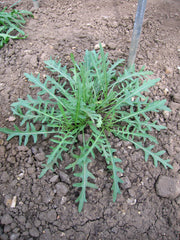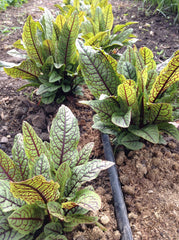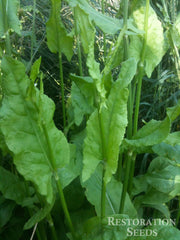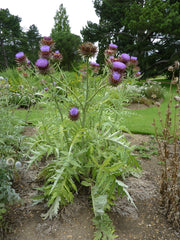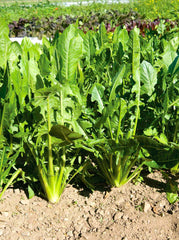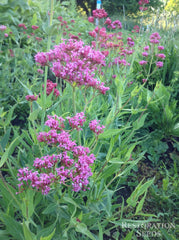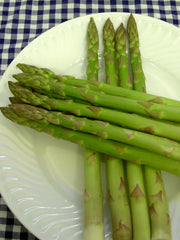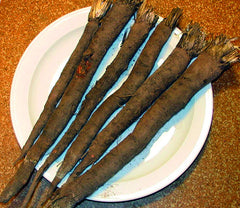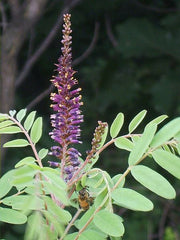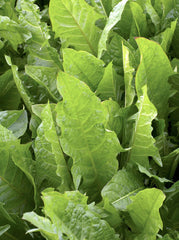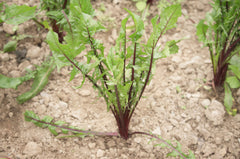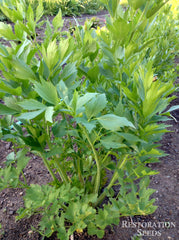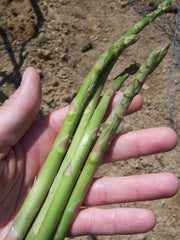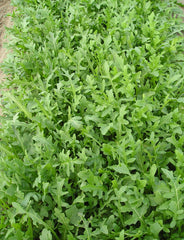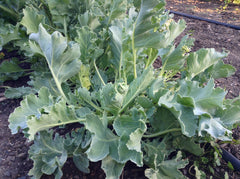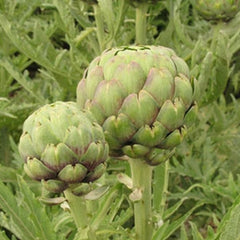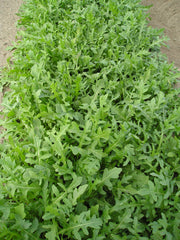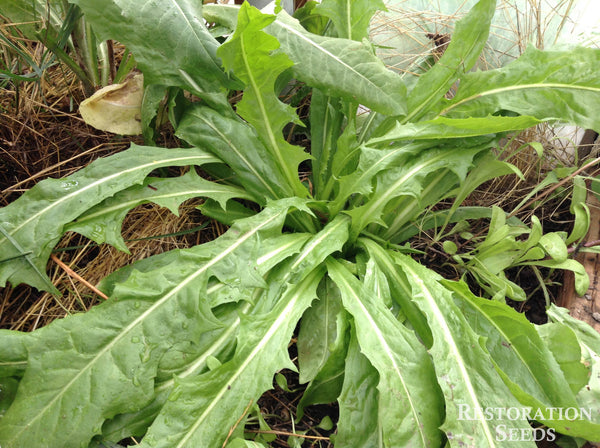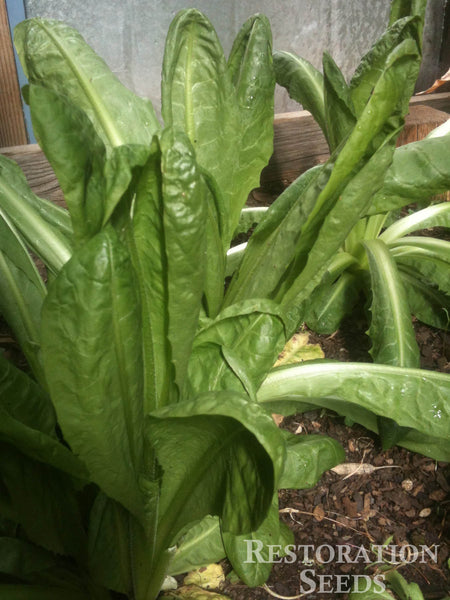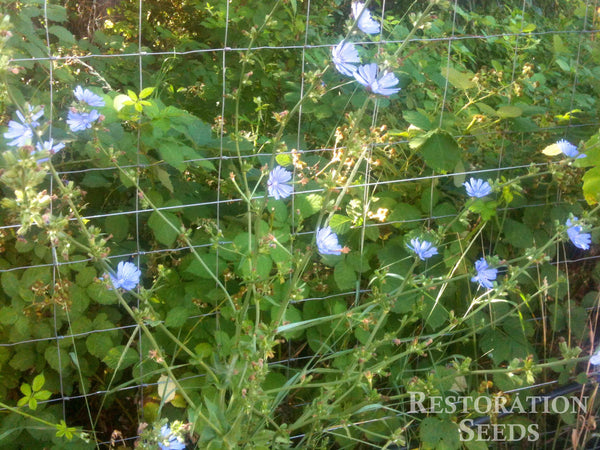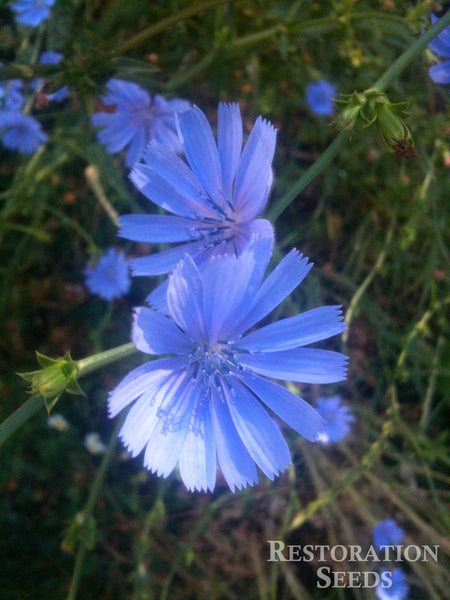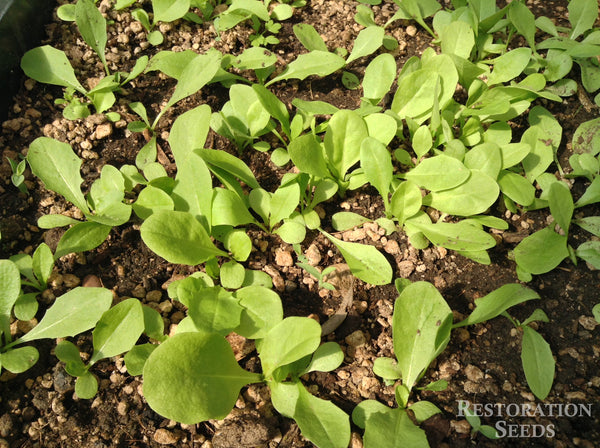Wild chicory
Cichorium intybus
HOW TO GROW CHICORY
When being grown for perennial roots, directly sow in June or May then thin all summer. When grown for edible leaves, direct sow in April for a summer crop or June and July for a winter crop. Deep taproot loosens compacted soils. Soils rich in available phosphorous are desirable, since phosphorous is essential to early plant development. Most chicories will survive winter temperatures between 20 and 25˚F. Soil pH 5.2–6.2. Hardiness zones 4-8. Perennial.
Days from maturity calculated from the date of seeding. Average 14,300 seeds per ounce. Federal germination standard: 65%. Usual seed life: 8 years.
Planting Depth 1/8-1/4”
Soil Temp. Germ. 60-75˚F
Days to Germ. 10-15
Plant Spacing 10–12”
Row Spacing 18–24”
Days To Maturity 70-85
Part Shade, Moist Well Drained
Days from maturity calculated from the date of seeding. Average 14,300 seeds per ounce. Federal germination standard: 65%. Usual seed life: 8 years.
Planting Depth 1/8-1/4”
Soil Temp. Germ. 60-75˚F
Days to Germ. 10-15
Plant Spacing 10–12”
Row Spacing 18–24”
Days To Maturity 70-85
Part Shade, Moist Well Drained
Wild Seed Count
1 Ounce ≈ 14,175 seeds
- 30 Seeds$3.50
- 300 Seeds$9.00
- 1 Ounce$28.00
Bright blue flowers. Young leaves are eaten in salads. Roots are baked, ground and used as a coffee substitute. Tonic, Diuretic and laxative properties. Also a livestock forage crop, up to 30 percent protein, high in potassium, calcium, sodium, iron and manganese. Deep taproot, drought resistant. These seeds were wi...
Bright blue flowers. Young leaves are eaten in salads. Roots are baked, ground and used as a coffee substitute. Tonic, Diuretic and laxative properties. Also a livestock forage crop, up to 30 percent protein, high in potassium, calcium, sodium, iron and manganese. Deep taproot, drought resistant. These seeds were wild-crafted in Southern Oregon. Similar to 6 Point Chicory but wild crafted in Southern Oregon, the true wild variety. Tags: Color: Green, Specialty: Cooking Green, Specialty: Drought Tolerant, Season: Spring Fall Winter
Native to northern Middle East to southern Balkan Peninsula. Naturalized to North America, Europe and Australia. Food and medicinal plant used by Egyptians, Greeks and Romans for the roots and shoots in spring like dandelion. Delicious chicory recipes.
Native to northern Middle East to southern Balkan Peninsula. Naturalized to North America, Europe and Australia. Food and medicinal plant used by Egyptians, Greeks and Romans for the roots and shoots in spring like dandelion. Delicious chicory recipes.
Learn More
Meet Your Farmer
We promote fair trade, organic practices and environmental responsibility throughout the Restoration Seeds supply chain. Below are the family farmers and seed suppliers who bring our open pollinated seeds to you.
Idyllwild
Conventional
Seed grower since 2018


Idyllwild was born of our joyful curiosity and celebration of nature’s diverse gifts. Following nature’s model of open dispersal and dissemination, we share these seeds with you and invite you to play in the garden of abundance. We learn from nature and she has taught us to live and think in terms of “abundance” instead of “scarcity”. Diversity - in all forms, from genetic to creative expression - is the heart of resilience. We enjoy experimenting with myriads of flavors, colors, and textures and the world opens to us in infinite possibilities. As a result, we are nourished in body, mind, and spirit.
Reviews
